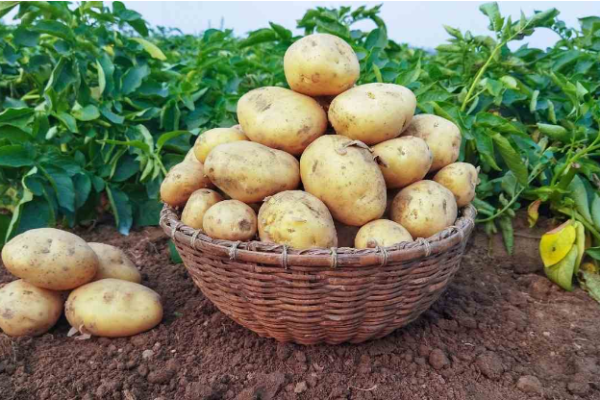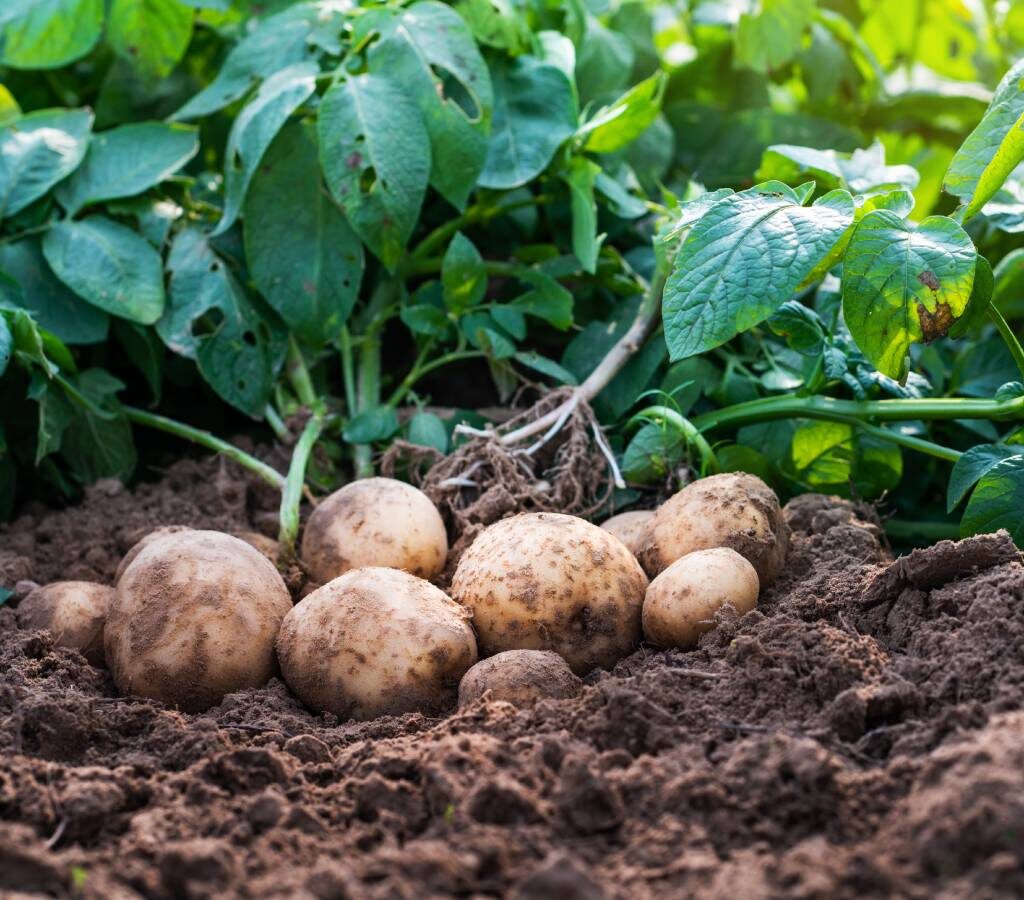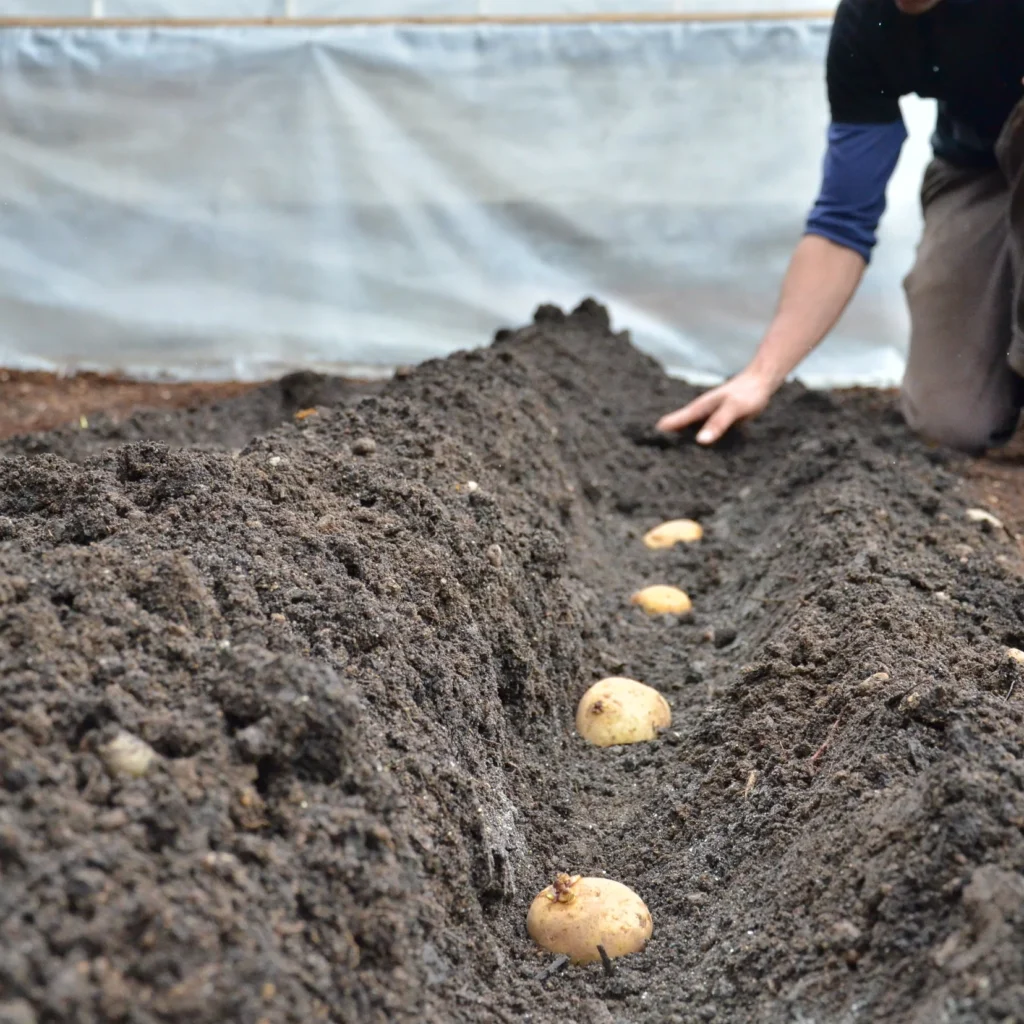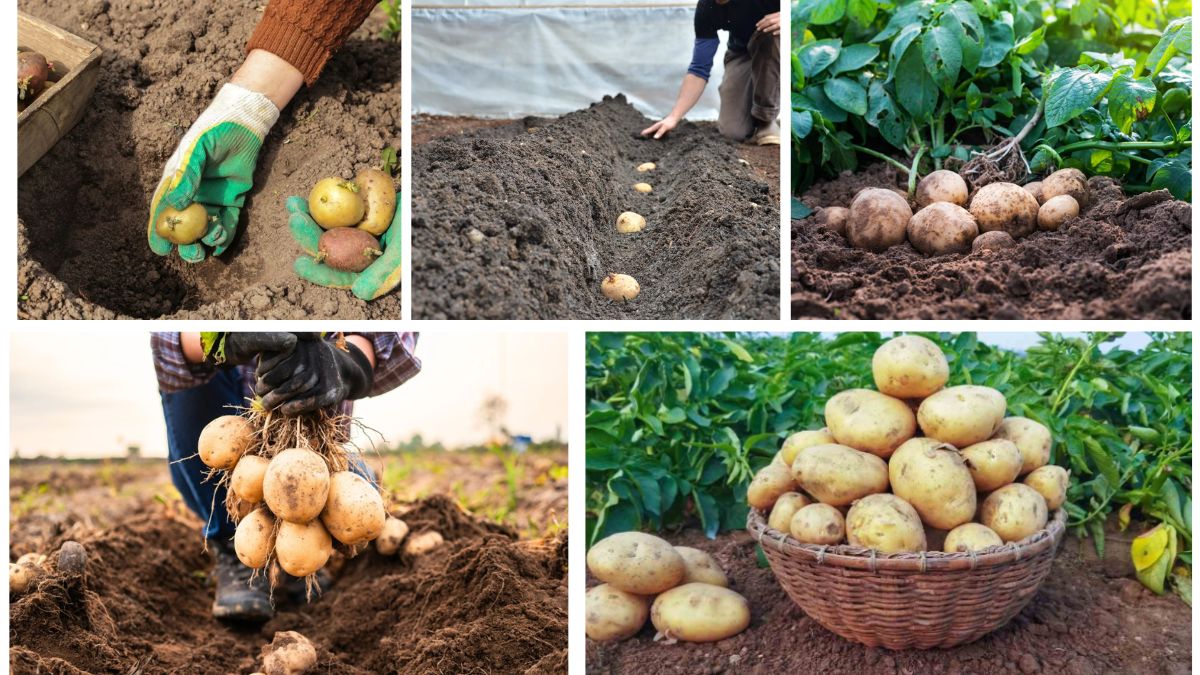Potatoes are one of the world’s most widely grown and consumed crops, offering nutrition, versatility, and ease of cultivation. Whether you’re planting them in a backyard garden, raised beds, or large fields, one crucial factor often determines the success of your potato harvest: planting depth. Planting potatoes at the right depth not only ensures strong root development but also protects tubers from sunlight, reduces the risk of disease, and maximizes yields.
This guide explores everything you need to know about potato planting depth—from why it matters, to best practices, soil preparation, and common mistakes to avoid—so you can achieve a bountiful harvest.
Why Planting Depth Matters for Potatoes

Unlike many plants, potatoes don’t produce edible roots but rather underground tubers that develop on specialized stems called stolons. These tubers need a loose, well-drained environment and protection from external factors. Planting depth directly impacts:
- Tuber Formation – Deeper planting encourages stolons to produce more tubers along the underground stem.
- Protection from Sunlight – Shallow planting may expose tubers to sunlight, turning them green and toxic due to solanine production.
- Moisture Retention – Correct depth ensures tubers remain in consistently moist soil, crucial for growth.
- Temperature Control – Soil acts as insulation; proper depth prevents damage from heat and cold.
- Yield Maximization – Balanced depth leads to larger, more uniform harvests.
Getting this balance right can mean the difference between a small handful of potatoes and a full basket of healthy tubers.
Ideal Planting Depth for Potatoes

The right planting depth depends on potato type, soil condition, and growing method. However, general guidelines exist:
- Standard Depth: Plant seed potatoes 4–6 inches (10–15 cm) deep in loose, well-prepared soil.
- Light, Sandy Soil: Plant slightly deeper, about 6–8 inches (15–20 cm), since sandy soils dry out quickly.
- Heavy Clay Soil: Plant closer to 4 inches (10 cm) to prevent rot in overly compacted soil.
- Container or Raised Bed Gardening: Start at 4 inches (10 cm) deep, then gradually add soil (hilling) as plants grow.
The key is ensuring potatoes are deep enough to protect tubers but not so deep that shoots struggle to emerge.
Soil Preparation Before Planting

Potatoes thrive in loose, nutrient-rich soil that allows tubers to expand freely. Proper soil preparation improves both depth effectiveness and yield.
Steps to Prepare Soil:
- Loosen the Soil: Dig or till at least 12 inches (30 cm) deep to ensure good aeration and drainage.
- Amend with Organic Matter: Mix in compost or well-rotted manure for nutrients.
- Avoid Fresh Manure: This can cause scab disease and nitrogen imbalance.
- Check Soil pH: Potatoes prefer slightly acidic soil with a pH of 5.5–6.5.
- Mound or Ridge Rows: Raised rows allow excess water to drain and create ideal planting depth.
A well-prepared bed sets the foundation for optimal root and tuber development.
Step-by-Step Guide to Planting Potatoes at the Right Depth
- Select Seed Potatoes: Choose certified, disease-free seed potatoes. Cut large ones into chunks with at least one “eye,” letting them cure for 1–2 days before planting.
- Mark Rows: Space rows about 24–36 inches (60–90 cm) apart for easy hilling and harvesting.
- Dig Trenches: Create trenches 4–6 inches (10–15 cm) deep.
- Place Seed Potatoes: Lay seed potatoes 12 inches (30 cm) apart within the trench, eyes facing upward.
- Cover with Soil: Backfill trenches with loose soil, covering the seed pieces completely.
- Water Gently: Keep soil consistently moist but not waterlogged.
- Hill as They Grow: When plants reach 6–8 inches (15–20 cm) tall, mound soil around the stems to encourage tuber formation and maintain coverage.
The Role of Hilling in Depth Management

Even if you plant potatoes at the recommended depth, tubers may grow closer to the surface as stolons extend outward. That’s where hilling comes in.
- What is Hilling? – Pulling soil (or mulch) around the base of the potato plant to cover stems and protect tubers.
- When to Hill? – Hill every 2–3 weeks or when plants grow 6–8 inches taller.
- How Much Soil to Add? – Add 3–4 inches (7–10 cm) of soil each time, leaving the top leaves exposed.
- Alternatives: Use straw, compost, or mulch as a hilling material.
Hilling increases effective planting depth and prevents greening, boosting yields significantly.
Common Mistakes with Potato Planting Depth
- Planting Too Shallow: Tubers may turn green, be exposed to pests, or dry out quickly.
- Planting Too Deep: Shoots may take longer to emerge, leading to weak or stunted plants.
- Ignoring Soil Type: Planting depth should adjust to sandy or clay-heavy soils.
- Poor Soil Preparation: Compacted soil restricts tuber growth, regardless of depth.
- Skipping Hilling: Even properly planted potatoes require hilling for best results.
Avoiding these mistakes ensures healthier plants and a higher harvest.
Additional Tips for Maximum Potato Harvests

- Choose the Right Variety: Early-season potatoes need less depth, while late-season varieties benefit from deeper planting and frequent hilling.
- Use Mulch: Mulching with straw helps regulate soil temperature and moisture.
- Water Consistently: Potatoes need about 1–2 inches of water per week, especially during tuber formation.
- Rotate Crops: Avoid planting potatoes in the same spot for consecutive years to reduce disease risk.
- Watch for Pests: Colorado potato beetles and wireworms thrive in shallow soil; proper depth helps deter them.
Harvesting: When Depth Pays Off
The depth at which you plant and hill potatoes determines the ease of harvesting. Properly planted and hilled potatoes will form neat clusters underground, making them easier to dig up without damage.
- New Potatoes: Harvest 2–3 weeks after flowering by carefully digging around the base.
- Main Crop: Wait until the foliage yellows and dies back, then dig deep enough to collect mature tubers.
Well-spaced, correctly planted potatoes reward you with a large, high-quality harvest.
Conclusion
Proper potato planting depth is a simple yet powerful technique that dramatically influences yield, quality, and ease of harvest. By planting at the recommended 4–6 inches deep, adjusting for soil type, and consistently hilling as plants grow, you create the perfect conditions for tubers to thrive. Combined with soil preparation, adequate watering, and pest control, the right planting depth ensures a harvest full of healthy, delicious potatoes.
Whether you’re a backyard gardener or cultivating on a larger scale, mastering potato planting depth is one of the most effective steps you can take to guarantee maximum harvests.





